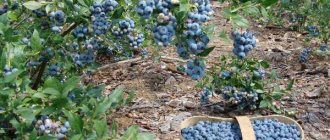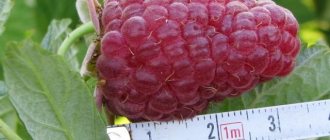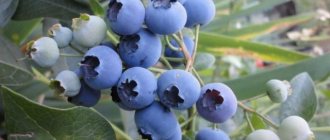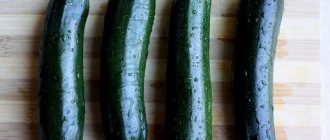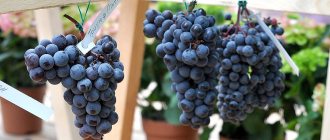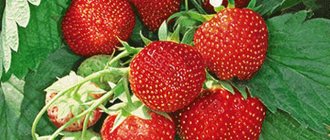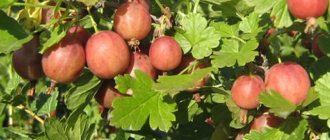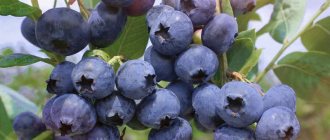An exotic plant with a large number of sweet berries has become a frequent visitor to household plots over the past few decades. Bluecrop blueberries do not have very large fruits, but they are the most reliable of all representatives of the species. The plant takes root in any soil, is not afraid of frost, has strong immunity and is resistant to diseases, and always produces a bountiful harvest. Blueberries of this variety are used for growing on an industrial scale; they can also be found in household plots.
Historical summary
Bluecrop's homeland is the USA. Since 1908, wild blueberry bushes began to be observed for the purposes of study and cultivation. In 1910, Frederick Coville and Elizabeth White began the first plantings of the plant. The very next year, research was in full swing. Scientists have bred 15 hybrids with different characteristics. In 1916, the tall Bluecrop variety was born.
For the base, materials of two types were taken: GM-37 (Jersey x Pioneer) and CU-5 (Stanley x June). The seeds were studied and tested for a long time. In 1952, seedlings began to spread throughout the United States. Gardeners appreciated their qualities and began to cultivate plants on a production scale. Bluecrop appeared in the USSR in the 60s of the 20th century. It did not immediately become widespread; we can say that this fact went unnoticed. At the beginning of the 21st century, the plant was included in the State Register and began to be actively used for the production of various jams, preserves, and drinks.
In Russia, the variety is cultivated in all regions with a temperate climate, including:
- Moscow region.
- Leningrad region.
- Trans-Urals.
- Western Siberia.
- Far East.
Description
Tall blueberries are planted in garden plots not only for harvest, but also for design purposes. Bluecrop makes a wonderful hedge that will change foliage color with the seasons. An additional bonus will be a large harvest of berries.
Bluecrop blueberries are distinguished by large sweet and sour fruits
Before planting bushes in your garden, you need to know whether it will be comfortable in the proposed conditions. The plant can reach one and a half to two meters in height. The width of its crown is 1.7-2 meters. This powerful plant requires a large living space. The plant has small fibrous roots located at a depth of about 40 cm. The shoots stand straight and bend only under the load of berry clusters. The leaves have an elongated shape, a jagged edge and a bright green color.
The plant blooms with white bells. They are collected in small clusters. The roots go deep 30-40 centimeters. They have a fibrous structure without processes. This must be taken into account when loosening and watering. In order not to lose the plant, you should not expose its root system. This type of blueberry thrives in acidic peat soils, which are found in colder regions.
Bluecrop was specially bred for northern regions, so planting it in the south is not recommended. It will not take root there and will not begin to bear fruit abundantly.
Bluecrop fruits have a diameter of 2 centimeters. They are distinguished by a rich blue color. The weight of each fruit is 2.5-3 grams. They taste sweet and sour with a slightly tart aftertaste. The berries begin to ripen 20-25 days after the fruits form on a dense bunch.
Blueberry Bluecrop: reviews from those who planted
On berry forums, those gardeners who grow Bluecrop blueberries on their plots leave reviews about this berry bush. Some of them are presented below.
Anna, 48 years old: “I planted seedlings of this variety several years ago. This year I harvested my first harvest. The berries are large and very tasty. I was advised not to harvest immediately as it ripens, but to let the berries sit on the shoots for a while. I did just that, and as a result, the taste of the berries was beyond praise.”
Olga, 40 years old: “I have been growing this berry bush for more than 5 years; for the last two years I have been collecting good harvests from it. The bushes do not freeze even in winter, although I still cover them with spruce branches before the onset of frost. It seemed to me that the variety’s fruiting was even too abundant - without support, the shoots lay on the ground under the weight of ripening berries. Even last fall I had to trim the stems slightly to slightly reduce fruiting.”
Tatyana, 52 years old: “I decided to plant blueberry bushes in my garden, they recommended that I buy Bluecrop seedlings. I ordered 4 pieces and planted them in the garden. I was afraid that they would freeze in the winter, so I covered the young bushes before the onset of cold weather. And it’s good that she covered it - the winter was cold and with little snow. But my bushes were not damaged. The variety is practically not susceptible to diseases, does not require special care, Bluecrop blueberries began to bear fruit 3 seasons after planting the seedlings in a permanent place.”
Thanks to its many advantages, the blueberry variety Bluecrop is becoming increasingly popular among Russian gardeners.
. Good yield, early ripening and low maintenance requirements are the main positive qualities of this berry bush. Therefore, those who have not yet chosen which variety of blueberries to plant on their plot should opt for Bluecrop.
Characteristics
The peculiarity of the Bluecrop hybrid is that it is not afraid of frost and adapts perfectly after planting. At home, it is often used on an industrial scale. You can also highlight a number of significant advantages of the variety:
- the plant easily tolerates frosts down to -32 degrees;
- it shows excellent resistance to drought;
- Bluecrop has strong immunity and is not afraid of most types of diseases;
- regardless of weather changes, it produces a bountiful harvest;
- the berries can be preserved for a long time;
- The variety is transportable and retains its presentation.
Tall blueberries are easy to care for. It does not need to be closed for the winter, as the bushes have high frost resistance. The main maintenance requirement is timely watering. To prevent moisture from evaporating quickly, weeding, loosening and mulching are required. If you trim the shoots in time, the bushes will delight you with their splendor and beauty.
If we compare Bluecrop with other varieties, it can be noted that it produces more yield, while remaining resistant to most diseases.
Weaknesses of Bluecrop
- The bushes are prone to reloading with the harvest; regular sampling of fruits is required even at the stage of technical ripeness.
- The plant becomes very thick, you need to regularly cut out the stems and branches. And also carry out general sanitary cleaning, improving the ventilation of the bush.
- During the fruiting period, sufficient moisture is required. Otherwise, the berries may shrink and lose size.
- Mediocre, ordinary taste. These blueberries are not for gourmets. The fruits are often tart. But for the unspoiled consumer the taste is quite acceptable.
At the end of the article, I would like to add that Bluecrop is a truly worthwhile variety for industrial cultivation, and by trusting in it, the farmer will receive generous and guaranteed returns. And at the dacha plot our hero will delight with a variety of tasty large berries. And by autumn it will also bring aesthetic pleasure, brightly coloring the garden. But if you want to really enjoy berries with a rich taste, thick, rich aroma and admire their huge size, then you need to choose other varieties. To understand why blueberries are so loved and why they are so rapidly becoming popular in our country. Or just annoy them to Bluecrop. Let’s not even talk about all the benefits that these beautiful and unusual blue balls bring to the human body. Be sure to plant blueberries in your garden. And our articles will help you choose the right variety, which will quickly become your favorite and pride!
For a long time, Bluecrop blueberries have remained one of the favorite and sought-after varieties among amateur gardeners. Along with many new varieties, the old American blueberry variety is just as popular as the new ones. To grow a beautiful ornamental bush in the garden, get a high harvest every year and find out the secret of its popularity, you need to study agricultural technology and the intricacies of cultivation.
Advantages and disadvantages
Why did Bluecrop blueberries receive such high ratings from gardeners? It has both advantages and disadvantages.
Blueberry benefits:
- consistently high productivity;
- high frost resistance;
- excellent berry taste;
- resistance to most diseases;
- unpretentiousness to growing conditions;
- presentation of berries;
- high transportability.
Each variety has its own disadvantages. These include a long ripening period. The shoots are very branched and require constant care. There are so many berries growing that the plant becomes overloaded. Nevertheless, the variety is considered the standard and can often be found in garden plots.
Strengths of the variety
- Large, juicy, high-quality berries.
- Bluecrop fruits are sweet, tasty, and fragrant.
- Good adaptation to different growing conditions and weather conditions.
- Excellent frost resistance, blueberries tolerate heat and temperature changes, including winter temperature swings.
- The crop begins to bear fruit earlier than other varieties due to age.
- Abundant, regular and stable fruiting, uninterrupted supply of fruits for 30-40 days.
- The transportability and shelf life of the fruits are at a good level and do not crack during transportation.
- Thanks to foliage that changes color and shoots that turn red in the fall, Bluecrop can be a decoration for the site.
- The versatility of using berries.
- Resistant to many diseases and pests.
- The shoots do not fall under the weight of the berries, and the bush does not fall apart.
- It is the standard variety for blueberries around the world.
Blueberry propagation
Many gardeners prefer to purchase seedlings from trusted places where they can get advice on care and cultivation. You can also start growing shrubs yourself, using your own material. There are three effective ways to propagate blueberries:
- Seeds.
- By layering.
- By cuttings.
Seeds
Amateur gardeners do not practice this method because it is quite complicated and time-consuming. First, the seeds are soaked and then placed in a substrate. After the leaves appear, they are transplanted into individual containers. A healthy, strong seedling will produce its first harvest in 4-5 years. The main disadvantage of this method is that the plant does not inherit varietal characteristics.
By layering
This method is considered the simplest and is optimal for amateurs, especially beginners. To implement it, you need to bend the branches of the bush to the ground and fill it with prepared soil mixture. Sprouted cuttings are separated from the mother plant the following year.
Cuttings
Cuttings are a common method that is used most often by gardeners. Cuttings are harvested in the fall. They are put in a cool place and stored wrapped until spring. In April, they are taken out, cut into lengths of about 25 cm, placed in a substrate and covered with film until August.
Planting blueberries
Planting and caring for Bluecrop blueberries is not difficult, since the plant is unpretentious. In order for it to develop well, it is necessary to provide proper care. Initially, you need to choose the right place, healthy seedlings, and high-quality substrate. It is recommended to plant bluecrop in the spring so that it has time to take root and get stronger. In the southern regions, this can be done in the fall, provided that early frosts are not expected.
Planting a blueberry seedling will not cause any difficulties even for a beginner.
If all planting conditions are met, the plant will grow strong and will delight you with stable yields.
- You need to choose a place that is warm, sunny and open. It is necessary to ensure that tall trees do not grow in the immediate vicinity. Groundwater should come no closer than a meter. Pollinators must be planted next to Bluecrop. The plant can cope on its own, as it is a good honey plant. But pollinators with the same flowering period will help increase the yield.
- We need to take care of the composition of the soil. It should include peat, black soil, sand, sawdust. Blueberries love soil with a high level of acidity, pH 4 to 5.
- When choosing seedlings, you need to consider material that is 2-3 years old. It has a mature root system and enough strength for further development. The seedlings should not have any damage, dry spots, or signs of rotting.
High-quality planting material is sold in special nurseries. When purchasing, you need to carefully examine the root system and shoots.
In order for a plant to feel comfortable in its garden plot, it needs to create all the conditions and take care to comply with planting standards.
Landing algorithm:
- Before planting, you need to remove the seedlings from the containers and straighten the roots.
- The hole should be 55-60 centimeters deep and wide.
- It is necessary to lay drainage at the bottom. Broken brick, gravel or expanded clay are suitable as a drain for excess moisture.
- The raised layer of soil must be mixed with peat, black soil and sand. It is necessary to achieve high soil acidity.
- A third of the mixture is poured onto the bottom, after which the seedling can be installed.
- After the root is comfortably located, it must be covered with the remaining soil and pressed lightly.
- When planting, abundant watering is required.
- The final procedure will be mulching. For these purposes, you can use pine needles or sawdust.
During the first watering, 100 milliliters of table vinegar must be added to 10 liters of water.
Advice. It is important to consider what plants were on the site before. If lime fertilizer was used for them, then it is better to choose another place for the blueberries.
Subtleties of cultivation
The successful cultivation of Bluecrop blueberries is influenced by the quality of planting material, determination of the planting site, and proper preparation of the pit.
See also
How to properly prune barberry bushes in summer, spring and autumnRead
Selection of seedlings
When buying planting material, they give preference to strong two-year or three-year-old seedlings with a growth of 30–35 cm. The roots of the seedling are well developed, without visible signs of disease.
Selecting a location
A correctly selected planting location is the key to abundant fruiting.
The Bluecrop blueberry is photophilous. Can tolerate partial shade, but will not see a good harvest. The area around the planted blueberry bush must be cleared of tall plants so that it is not shaded. Planted within 2.5 m by 1.5 m so that as the seedlings grow, they do not interfere with each other.
Soil acidity is needed in the range of 3.5–5.0 (pH). If the acidity is low, oxidize the soil with an acid-containing agent.
Blueberries of the Bluecrop variety prefer places with shallow groundwater - approximately 60 cm.
Blueberries are not planted on limed soil. It is not grown after strawberries, after vegetables - carrots, garlic and other crops for which lime was added.
Soil preparation
It is important to choose the right soil for growing Bluecrop garden blueberries. The composition of the soil should be similar to forest soil. By mixing sand with peat, the desired soil composition is obtained.
Landing dates and rules
Planting is carried out in the spring at an air temperature of +17 ° C. In autumn they are planted in September. Blueberries should take root before cold weather arrives.
Planting blueberries involves the following algorithm of actions:
- Prepare a hole for planting measuring 50 x 50 cm.
- Cover the bottom with crushed stone or crushed bricks to create drainage.
- Prepare the soil substrate by mixing acidic peat and black soil, adding sand. To oxidize the earth, sulfur is mixed with pine litter.
- Sprinkle some of the prepared soil on top of the drainage.
- Remove the planting material from the container, straighten the roots and lower it into the hole.
- Pour out the remaining soil, deepening the stem 3 cm.
- Mulch with pine litter.
- Pour in acidified water. Pour 100 g of table vinegar into a ten-liter bucket of water.
Planted blueberries are fed twice using complex fertilizers.
Features of care
The Bluecrop variety, like Patriot, is unpretentious in care. It is for this quality that novice gardeners love him. If you carry out the necessary procedures in a timely manner, the plant will respond handsomely. The list of skincare procedures is not very long, so it is easy to follow:
- It is recommended to water the bushes 3-4 times a week. However, they do not tolerate stagnant moisture. If there is mulch or during the rainy season, the amount of watering must be adjusted.
- Preparations with a high content of boron, phosphorus, nitrogen and potassium are well suited for feeding. They do not violate the requirement for high soil acidity. The bushes should be fed in the spring in April and in June at the stage of fruit formation.
- It is recommended to loosen and weed the soil as needed after watering. The roots of the plant must breathe, so only observation will help determine the timing of these procedures.
- The shoots should be pruned in the fall after harvesting. Branches lying on the ground are removed. You need to leave straight, even shoots. Proper pruning will help you get an even bigger harvest next season.
- In regions with frosts above 30 degrees, it is recommended that after pruning, collect the branches into a bundle, tie them, bend them to the surface of the ground and insulate them using dead wood, cellophane, roofing felt or other material available.
If all care rules are followed, the bushes have good immunity and produce a large harvest. To prevent diseases, it is necessary to spray with appropriate preparations.
About the advantages and disadvantages
Each garden plant has its own pros and cons. The positive features of the described variety include:
- high yield (up to 9 kg per bush);
- resistance to low temperatures (up to -34 degrees);
- good immune system.
Among the disadvantages are:
- the bushes are overloaded with berries;
- Due to the extended period of fruiting, it is difficult to wholesale the crop.
In general, highbush blueberry Bluecrop is a very good berry crop, suitable for growing in our country.
Harvest sales
Blueberries have excellent transportation and a long shelf life. At a temperature of +5 degrees, the crop will not deteriorate within 15 days. Berries can be frozen and kept in the refrigerator for up to 6 months. Most often, jams and preserves are made from blueberries. They have a pleasant taste with a slight sourness.
It is not recommended to store frozen berries for longer than a year. They lose vitamins and become useless to the body.
Blueberries are widely used in cooking. Like most garden berries, it is great for making jam.
Collection and storage rules
You need to collect the berries carefully, trying not to deform them, into small containers. It must be cooled within 4 hours after collection, otherwise it will begin to collapse. Chilled fruits are stored at temperatures up to +2° C with a relative humidity of 90-95%. The harvested crop can be stored for two weeks at a room temperature of 1.5 ° C and a humidity of 85%.
You can prepare the fruits for the winter by freezing them or processing them.
Bluecrop blueberries are a popular berry that ripens on tall bushes in cold climates. The bluish clusters characteristic of the variety look good on the bushes in summer. Blueberries are widely used in the food industry and in the kitchens of caring housewives for desserts. In addition, it is valuable for its healing properties.
Diseases and pests
Bluecrop blueberries are varieties that are resistant to diseases, but they are still susceptible to some of them, as well as attacks from pests.
The most common are the following:
- Gray rot. A fungal disease that attacks ripe berries. It looks like fluff. Bushes that are fed generously with nitrogen fertilizers or neglected to weed are especially susceptible to rot.
- Mummification of fruits. The disease is caused by a fungus. Not only the berries, but the entire bush can be affected by the disease. Fungicides are used for treatment.
- Stem cancer, or shoot burn. One of the most dangerous fungal diseases leading to plant death. Signs of stem cancer are small red-brown spots on the shoots, which gradually increase in size and merge into one large one. It is very important to start treatment in a timely manner.
- Powdery mildew. A fungal disease in which a white coating appears on the leaves. Subsequently, it becomes gray and dry, black dots appear inside it - these are fungal bodies. Due to the disease, the stems dry out, the bush has an irregular shape and becomes weak.
- Red and black aphids. The insect infects all parts of the plant, laying many small eggs. As a result, the leaves and shoots wither and turn yellow.
- Kidney mite. A very small pest that is difficult to detect immediately. It sucks the juices out of blueberries and can carry diseases.
General characteristics of blueberries, their types and varieties
Blueberry is the name of a plant and berry that belongs to the Heather family. This plant species is native to North America. It is here, in the border areas of Canadian territory (Nova Scotia, Ontario) and some American states (South Carolina, Wisconsin, Alabama) that this wonderful berry grows. These places are considered the natural habitat of this species. In Europe, blueberries can grow in the northern territories, since the lands suitable for them are marshy places and dense forest thickets.
Varietal blueberries began to be grown only in 1908 in the USA. After which these types of berries spread everywhere, new varieties began to be developed that were more resistant to different climates and soils.
On our territory, many still consider blueberries to be wild berries, but recently they can be increasingly found in summer cottages and gardens. Thanks to the presence of many species and hybrid varieties, this plant has become more unpretentious and is excellent for obtaining a large harvest of berries, as well as for decorating a garden plot.
There are three varieties of blueberries.
- Highbush blueberry. One of the youngest varieties. The beginning of its cultivation dates back to the 20th century. It was first introduced in the USA. A distinctive feature of this species are the rather tall bushes, as is clear from the name. Very often, many people confuse blueberries with blueberries, because in translation from English blueberry means both blueberries and blueberries. This type of blueberry is perfect for our territory, and therefore is considered the most common. It has several productive varieties: blueberry Bluecrop, Patriot, Blugold, Nelson, Chandler, Elizabeth and others.
- Common blueberry is another type of blueberry that has many names: swamp, lowbush, swamp. Forms dense thickets of bushes of medium height (40-100 cm) in swamps and dense forests.
- Narrow-leaved blueberry - this species is also gaining popularity among gardeners over time. This type of blueberry is native to Canada. It is unpretentious and frost-resistant.
Let us note that in Russia the most cultivated species is the highbush blueberry, from which many varieties have been bred that bring a large harvest.
Disease Prevention
Despite the fact that Bluecrop blueberries are very resistant to diseases, you need to be very careful and take emergency measures if signs of infection appear. This variety is susceptible to some ailments.
- Proper watering, fertilizing and preventive spraying with fungicide will help prevent stem cancer.
- Controlling the application of nitrogen, timely watering and high-quality pruning of affected shoots will make it possible to cure bushes from gray rot.
- If powdery mildew is present, it is necessary to treat with preparations such as Topaz or Bayleton.
- Gardeners use copper sulfate to get rid of bud mites.
- The preparations “Iskra” and “Aktara” are used to eliminate different types of aphids.
It should be noted that Bluecrop rarely gets sick if all care rules are followed. Its advantages are frost resistance, unpretentiousness and productivity. It’s not for nothing that the variety is included in the standard category. It can give odds to many new hybrids bred later.
